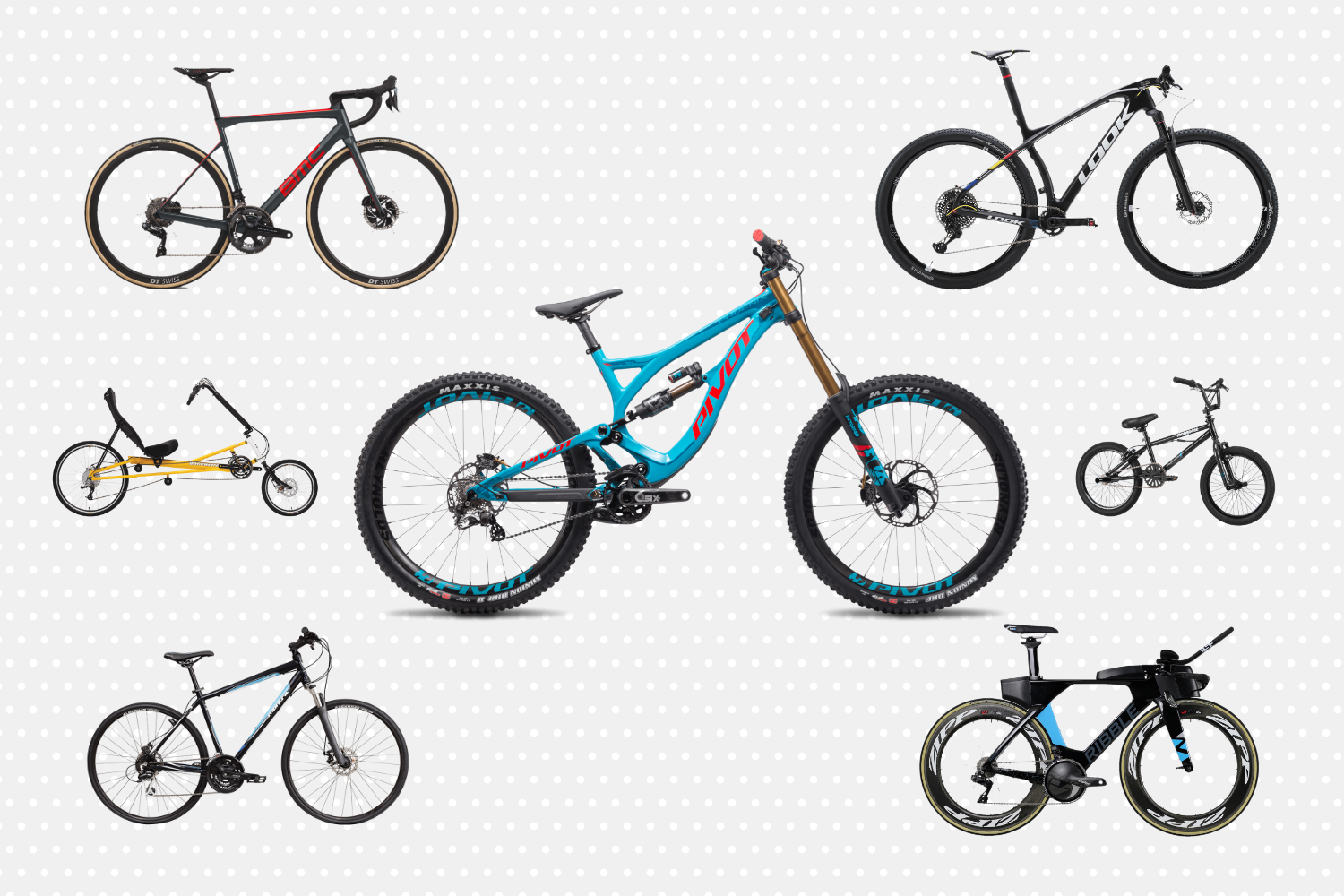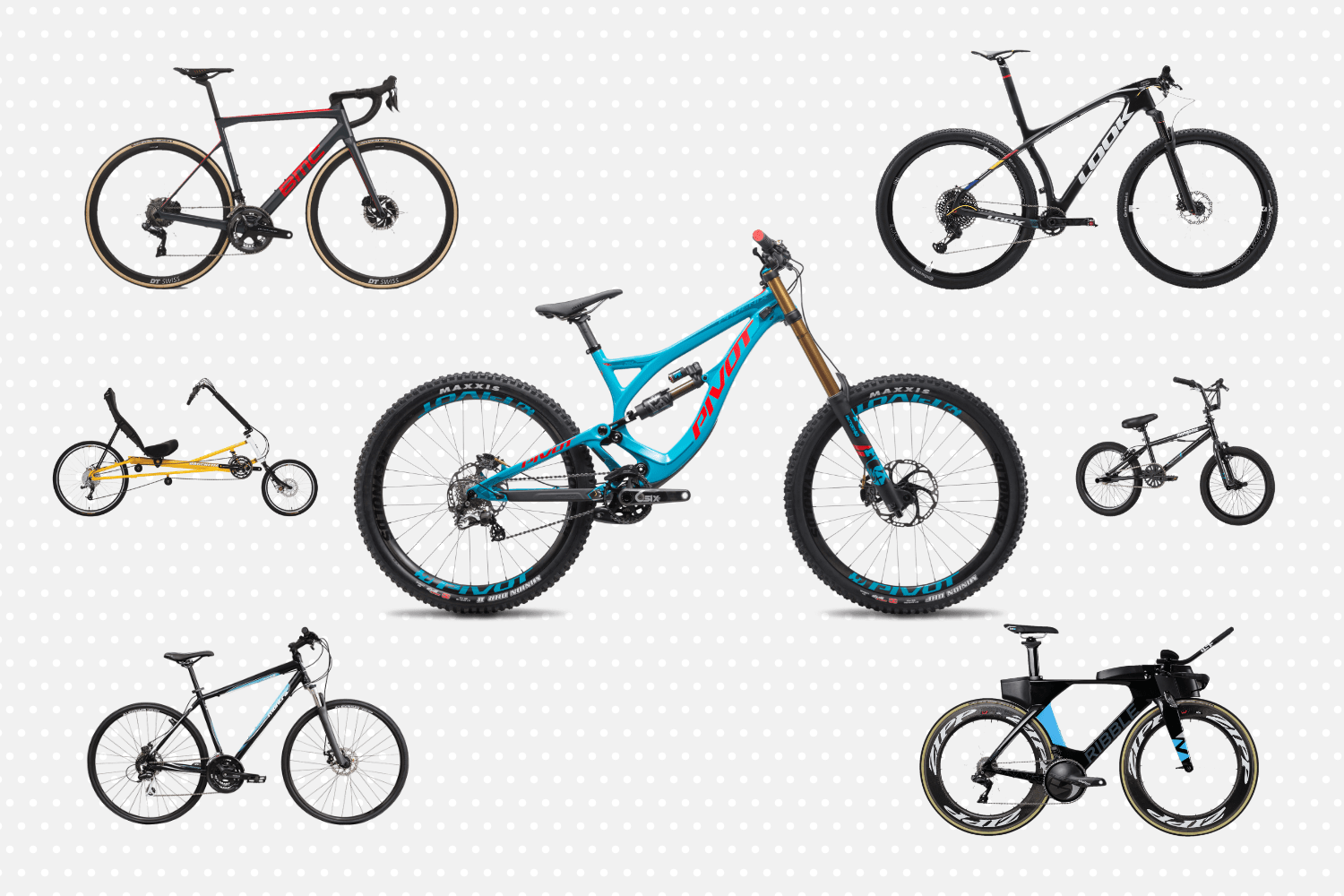You walk into a cycle shop to buy a bike and one of the first questions the shopkeeper asks you is whether you want a Road, MTB or Hybrid cycle. If you don’t know the answer to that, then this article is meant for you!
Difference between Road, MTB and Hybrid Cycles
Big chunky looking bikes, sleek fragile cycles, wide tyres, narrow tyres, straight handlebars, those curvy funny looking bars. What is meant for what? Let’s take a look by checking out the different types of cycles around in the market!
Road
As the name suggests, these bikes are meant to be used on the road. Road bikes are the direct evolution of cycles from their inception in the 19th century. As road conditions over the decades improved, so did the specialisation of these bikes to go faster on asphalt. In the process losing out on the flexibility of riding anywhere.
Drop handlebars, skinny tyres, lightweight frames and gearing biased towards speed is typical to road bikes.
Currently, road bikes are available in the following categories.
Race
Race bikes are the quintessential weapon for speed freaks. These are built to be as light as possible for climbing and the posture is aggressive for racing. It is perfect for people who want to go all guns blazing but for a short period of time. Because of its aggressive nature, it isn’t entirely suitable for longer rides.
Time Trial
TT bikes are meant for a specific purpose. To be aerodynamic and cut through the wind like a hot knife through butter. Every element on the bike is designed to provide minimal resistance to the wind. Visually distinguishable by the TT bars out front and the flatter tubing employed in the frame design.
Aero
An attempt to take the best of both worlds from race and TT bikes, Aero cycles are meant for road racing, but they use design features from time trial bikes. These bikes will be slightly heavier than your road race bike. They score over road race bikes on flatter sections of the race course, thanks to their aerodynamic profile.
Endurance
Every cyclist is not looking for a supremely aggressive posture, especially not on longer rides. This is where the endurance/ sportive bikes have made a niche for themselves. More people are buying into these road bikes which are more comfortable than race geometry cycles.
In India, endurance road bikes are popular thanks to the number of brevets and randonneurs around. The versatility of sportive bikes allow them to be used for commuting as well, provided one is comfortable with drop bars.
Touring
Touring bikes are on the other end of the technology spectrum. These bikes are over-engineered to last a lifetime. The seating position will be upright, tyres wider, frame design is old school and generally steel, options for racks and mudguards are also provided.
Touring bikes are the slowest to adopt new technology, as tourers cannot afford a breakdown in the middle of nowhere.
Cyclocross
For those road cyclists who want to ride in the dirt! Cyclocross racing is held on mud tracks and the bikes as such have knobby tyres. These bikes will have drop bars, disc brakes and gearing very similar to mountain bikes. The advantage of cyclocross bikes are that they are much more comfortable while riding on pothole infested urban roads while commuting. This comfort comes at the cost of speed though.
Gravel
A recent development in the road cycling evolution. Gravel bikes were a direct descendant of cyclocross. Gravel bikes aren’t meant for racing and thus feature a more relaxed geometry, wider tyres, wider gearing, provision for mudguards and are capable of light touring as well. Bikepacking setups have made gravel bikes quite popular among weekend tourers.
Mountain Bike
Cyclocross and gravel road bikes are capable of handling simpler trails and dirt. But for the more serious stuff, you need a bike built for the purpose.
The name Mountain Bike is a bit of a misnomer as these aren’t specifically built for mountains, but for trail riding in general.
The evolution of MTBs started off with road bikes being ridden in the dirt. It is only in the 1970s and 80s when it really took off and new cycle manufacturers started building frames specifically for trail riding. At that time it was considered a passing fad. Now Mountain Bikes and equipment are easily available across the globe.
Wheel Sizes
Before delving into the variety of MTBs, a quick look at the different wheels sizes available. Unlike road bikes which are pretty much restricted to 700c wheels, MTBs are still experimenting with wheel sizes.
Traditionally these bikes were all equipped with 26″ wheels and nobody argued with that truism. Until some bright spark rocked that boat and there was utter mayhem in the tyres and wheels market. Which naturally brought about heated discussions between traditionalists and modernists.
Then came the advent of the 29″ hoops, with better rolling capability. The bigger wheels were not as good at changing direction and accelerating. Most purists still stuck to the 26ers.
To get the best of both worlds 27.5″ wheels were introduced. Slowly and steadily the two larger sizes took over the market, with the smaller wheel size all but extinct!
Cross Country
Cross Country (XC) riding includes a lot of climbing and descending. These are the lightest of mountain bikes. Both hardtails and full suspension bikes are popular amongst XC racers. In general hardtails are better at climbing while the full suspension bikes do a better job on gnarly serpentine terrain.
The choice between the two is often dependant upon the kind of terrain one expects to be riding on.
Downhill
Bikes built for bombing downhill in the fastest time imaginable. A long, low-slung bike with incredible suspension travel typifies this bike. Forks which resemble motorcycle suspension more than other MTBs.
It is near impossible to ride uphill with them, thus they either are either pushed to the top of the hill or taken up in motorised transport.
Enduro
An Enduro bike gives you a bit of an XC and a little downhill cycle in it. It can go downhill much better than an XC and can climb a hill better than a DH bike. These bikes are full-suspension and have less suspension travel as compared to a DH bike.
Also known as All Mountain bikes, these are built to be ridden on pretty much any terrain available, not just on curated trails.
Dirt Jump
A body of an MTB with the soul of a BMX bike. That pretty much sums up a Dirt Jump bike. These are made for use in dirt jumping parks. Athletes train to perform tricks while getting air on the steep jumps designed precisely for that reason.
Fat Bikes
The bikes aren’t fat. The tyres are! Tyres which have a cross section of 3.7 inches in comparison to regular MTB tyres which average around 2.2 inches.
Fat bikes were built to be ridden in snow and sand since they can be run with extremely low tyre pressures. Less than 10 psi!
Since the tyres work as dampeners, the bikes do not need suspension. Making them an instant hit with tourers who like the simplicity of a rigid bike. One less component which could possibly fail!
Hybrid
The ultimate best of both worlds cycle. Hybrids use flat handlebars like MTBs, but much narrower. Tyre width lies in between road and MTB specifications. Gearing is wide. These are the most ‘beginner friendly’ bikes.
Hybrids are perfect for commuting as they have an upright riding position. You can get either road or dirt biased hybrids. Road hybrids will have rigid forks and thinner tyres, while dirt biased will have a front suspension with around 80 mm of travel and slightly wider tyres.
The downside of buying a hybrid is that you will ‘outgrow’ it as soon as you get serious about your cycling. You will want a specialist bike for the road or dirt.
The Rest…
Bikes which don’t quite fit into road, MTB or hybrid categories are:
BMX
A lot of BMX athletes don’t consider themselves cyclists! They feel the sport is far too different from other genres of cycling.
BMX bikes are built for street, dirt and park jumps and stunts. These are built to be super strong for the stunts which athletes undertake. The bikes take a solid hammering during its life. The reason why most are built using chromoly steel.
Folding Bikes
As the name suggests, folding bikes can be folded away into tiny spaces. Very useful if you plan to travel with your bike on an airplane, bus, train etc. The bikes fit into a regular sized suitcase when folded.
The folding mechanism is usually simple enough and does not require any special tools.
Fixies
If you don’t want to ever stop pedalling, then a fixie is for you! The hub has a fixed gear, which means when you stop pedalling the bike stops. It can take some time getting used to a fixed gear bike.
Fixies became quite popular with everyone wanting one. Even though more often than not these bikes would be stored, while the rest of the fleet would get used.
These bikes are pure art and look beautiful if you decorate your drawing room wall with it!
Recumbent Bikes
The ‘easy riders’ of the cycling world. Recumbent bikes allow you to sit in a ‘sofa’ like position while pedalling away to glory. Recumbent bikes have found favour among non-traditional cyclists around the world.
Tandem Bikes
If you really hate solo rides, then tandem bikes are perfect for you! A single frame which seats more than one rider who pedal and power the bike ahead.
Riding a tandem bike is a whole different experience all together!
So which bike should you buy?
The answer to that depends on your intended usage, the place you stay and your level of fitness.
If you know for sure whether you love zipping on sleek road bikes or shredding on chunky MTBs, then you would want to go ahead and buy a specialised cycle. On the other hand, if you aren’t sure what you like, then hybrids are a safe bet.
Hybrids are also perfectly suited for pottering around town or commuting to work. As such, they are decent as a second bike once you ‘upgrade’ to your dream machine!
Among MTBs, it makes sense to start off with an XC bike and see where your interest lies, in climbing or descending. An endurance geometry road bike or gravel bike are a good starting point for roadie life.
Read about the versatility of a gravel bike for new cyclists!
If you liked this article on the difference between road, MTB and hybrid cycles then check out our previous articles on buying a used cycle and see if buying a cycle online makes sense. Also check out this list of Online Cycling Stores in India from where you could purchase a new bike!




Interesting and useful information. Who would have guessed that there was so much between two wheels!